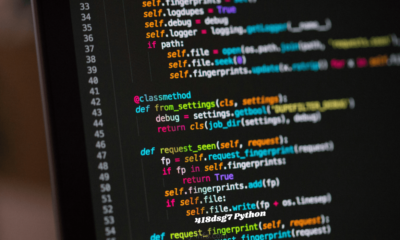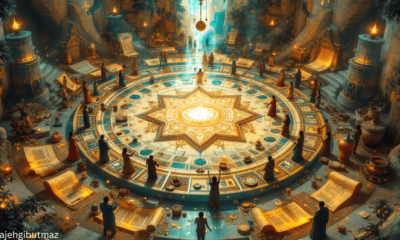Misty Opinion
A Comprehensive Analysis: Why Minimalism Is Overrated in 2025

Minimalism has solidified its place as a cultural and lifestyle trend, promising simplicity, clarity, and freedom from clutter. However, this analysis provides a detailed examination of why minimalism might be overrated, drawing on psychological research, practical challenges, cultural critiques, and real-world perspectives to offer a balanced view. Below, we explore the allure of minimalism, its psychological downsides, practical limitations, status signaling aspects, and the myth of happiness, ensuring a holistic perspective for readers considering this lifestyle.
Understanding the Allure of Minimalism
Minimalism is overrated, at its core, is about intentional living—focusing on what truly matters and eliminating the rest. It’s a reaction to our consumer-driven world, where we’re constantly bombarded with ads and societal pressures to own more. The philosophy emphasizes owning fewer, high-quality items, decluttering physical and mental space, and prioritizing experiences over possessions. Studies have shown that clutter can increase cortisol levels, the primary stress hormone, leading to anxiety and overwhelm, while a tidy environment is associated with lower cortisol levels, improved moods, and enhanced focus. For many, minimalism feels like a breath of fresh air, offering a path to reduced stress and greater productivity, as noted in a 2024 study by Grand Rising Behavioral Health
The popularity of minimalism is evident in trends like Marie Kondo’s tidying method, the tiny house movement, and minimalist interior design, with social media platforms like Instagram and Pinterest showcasing pristine, clutter-free spaces. However, while these benefits are real for some, they don’t tell the whole story. For others, minimalism can be restrictive, impractical, or even detrimental, leading to the argument that it’s overrated.
Psychological Downsides of Minimalism
One of the most significant criticisms of minimalism is its potential impact on mental health, particularly when practiced in an extreme or inflexible manner. While the goal is to reduce stress by owning less, the process and pressure to maintain this lifestyle can create new psychological challenges.
The Struggle to Let Go
For many people, possessions aren’t just objects—they’re memories and emotional anchors. A study published in the Journal of Consumer Research found that people often attach emotional significance to their belongings, and parting with them can feel like losing a part of oneself . Minimalism often requires letting go of sentimental items, such as old photos, children’s artwork, or family heirlooms, which can lead to feelings of loss or regret. For example, a parent might struggle to part with their child’s first drawing, even if it doesn’t “spark joy,” as minimalism often suggests. This emotional attachment isn’t something to be dismissed—it’s a very human trait, and forcing oneself to let go can be psychologically taxing.
The Pressure to Conform
Minimalism can also create a kind of perfectionism, especially in a social media-driven world. Influencers and minimalist gurus often showcase their pristine, clutter-free lives, setting an unrealistic standard. If you’re constantly worried about whether you’re “doing minimalism right,” it can become a source of anxiety rather than relief. A Reddit thread on r/minimalism from March 2023 captured this sentiment, with one user stating, “I feel guilty when I can’t maintain the minimalist lifestyle I see online. It’s like another thing to stress about”
This pressure can lead to feelings of inadequacy, undermining the very mental peace minimalism aims to provide.
The Risk of Isolation
Another psychological pitfall is loneliness. Minimalism often involves cutting out not just physical clutter but also social obligations or relationships deemed “unnecessary.” While this can free up time, it can also lead to isolation if you’re not careful. Humans are social creatures, and completely isolating oneself in the name of simplicity might not be the healthiest choice. A 2011 blog post on Be More with Less highlighted this downside, noting, “Upside: More virtual connections. Downside: Loneliness”
This aligns with research on social connections and well-being, which emphasizes that strong relationships are key to happiness—something minimalism might inadvertently undermine if taken too far.
Practical Challenges of Minimalism
Beyond the psychological aspects, minimalism can be downright impractical for certain lifestyles, making it overrated for those who don’t fit the typical minimalist mold.
It’s Not Always Affordable
Minimalism often requires replacing “clutter” with high-quality, long-lasting items, which can be financially out of reach for low-income individuals or families. If you can’t afford to buy durable, minimalist-friendly products, you’re stuck with cheaper, less durable items that need frequent replacement. This creates a paradox: minimalism can feel like a luxury only the wealthy can afford. A 2017 blog post on This Simple Balance pointed out, “For a single-income family, minimalism can feel like an unattainable ideal rather than a practical solution”
This financial barrier makes minimalism less accessible, undermining its universal appeal.
Families and Sentimental Items
For families, especially those with children, minimalism can be particularly challenging. Kids accumulate stuff—toys, artwork, school projects—and letting go of these can feel like erasing their childhood. A personal story from Today’s Parent in 2018 shared how the author is glad they didn’t throw out all their kids’ belongings, as revisiting those items later brought unexpected joy and connection
Minimalism’s emphasis on letting go can sometimes overlook the value of these tangible memories, making it less practical for family life.
Creative Individuals Need Space
For artists, writers, or anyone whose work involves physical tools or collections, minimalism can feel restrictive. A painter might need a studio full of canvases, brushes, and paints; a writer might cherish their overflowing bookshelf. Forcing oneself into a minimalist lifestyle in these cases could stifle creativity rather than enhance it. A Quora answer from 2017 noted, “Minimalism is great for some, but for creatives, having ‘stuff’ can be inspiring”
This highlights how minimalism might not align with the needs of those who rely on their possessions for inspiration or work.
Minimalism as Status Signaling
Here’s a less obvious critique: minimalism can be a form of conspicuous consumption, a way to signal status in a world where wealth is often displayed through possessions. By choosing to own less, especially high-quality, expensive items, minimalists can signal their discipline, wealth, or enlightenment. An article in The Guardian from 2017 puts it bluntly: “Minimalism is just another form of conspicuous consumption, a way of saying to the world, ‘Look at me! Look at all the things I have refused to buy!’”
This perspective highlights a cultural divide, where minimalism becomes a privilege of the wealthy, creating a gap between those who can afford to live minimally and those who cannot.
This status signaling aspect can also lead to social pressure, where people adopt minimalism not for its benefits but to fit in or appear virtuous. A 2022 article on Study Breaks argued, “Having many possessions doesn’t have to be bad; personal collections often hold sentimental value and showcase our unique interests and personalities”
suggesting that minimalism’s emphasis on less can sometimes erase individuality.
The Myth of Minimalism Leading to Happiness
Finally, let’s address the big promise of minimalism: happiness. While many minimalists report feeling more fulfilled after decluttering, this isn’t universal. For some, the pursuit of minimalism becomes another source of dissatisfaction if they feel they’re not doing it “right” or if they miss the comfort of their former possessions. Research on happiness suggests it’s often derived from experiences, relationships, and personal growth—not just from owning less. A 2020 study in the International Journal of Applied Positive Psychology found that materialism is linked to lower well-being, but it also noted that minimalism isn’t a guaranteed path to happiness for everyone
Take, for example, a story shared on Reddit: “I tried minimalism, but I missed the comfort of my books and knick-knacks. They weren’t clutter to me—they were part of who I am”
This sentiment captures the idea that happiness isn’t one-size-fits-all. For some, owning less brings joy; for others, certain possessions are sources of comfort and identity, and forcing minimalism can lead to unfulfillment.
Final Evaluation
For individuals considering minimalism in 2025, it’s clear that while it has its merits, it’s not a one-size-fits-all solution. Research suggests it can reduce stress and enhance focus for some, but there’s controversy over its psychological downsides, like guilt and isolation, and practical challenges, especially for low-income families or creatives. It seems likely that minimalism suits certain lifestyles, but the evidence leans toward it being a personal choice, with potential pitfalls like status signaling and the myth of universal happiness. For those exploring minimalism, the added value of reduced clutter might justify the effort, but it’s crucial to approach it with flexibility, ensuring it enhances rather than restricts your life. As we navigate modern living, let’s remember that there’s no single path to fulfillment, and that’s okay.
Misty Opinion
Patti LuPone: The Many Names, Timeless Roles, and Unshakable Legacy of Broadway’s Fierce Diva

Introduction:
This survey note provides a comprehensive examination of Patti LuPone’s life, career, and cultural impact, expanding on the direct answer with detailed insights drawn from extensive research. It aims to capture the breadth of her contributions, personal anecdotes, and the nuances of her legacy, ensuring a thorough understanding for readers interested in Broadway’s iconic figures.
Biography and Early Life
Patti Ann LuPone was born in Northport, New York, on April 21, 1949. She was brought up in a family of the artists. Angela Louise (née Patti), her mother, was a librarian, and Orlando Joseph LuPone, her father, taught English and worked as a school administrator. Her early exposure to performance was shaped by her Italian heritage, which includes roots in Sicily and Abruzzo. Her great-great-aunt Adelina Patti was a well-known opera singer in the 19th century. She started a dance group with her twin brothers William and Robert, the latter of whom was nominated for a Tony Award. highlighting her early passion for the stage.
LuPone attended Juilliard’s Drama Division and earned a BFA in 1972. She was a member of the first class, along with future stars like Kevin Kline, with whom she dated for seven years in the 1970s. In 1972, she began her professional career with The Acting Company, where she traveled extensively and honed her craft. This foundation led to her Broadway debut as Irina in Three Sisters in 1973, marking the start of a career defined by resilience and authenticity.
Notable Roles and Achievements
LuPone’s career is marked by iconic roles that have earned her widespread acclaim. Her role as Eva Perón in the 1979 Broadway production of Evita marked her comeback, and she won her first Tony Award for Best Actress in a Musical for her performance. This role, described as electrifying, set the stage for her reputation as a Broadway diva, a term she embraces, noting, “The word ‘diva’ to me means doing something supernatural with something natural.”
Other landmark performances include:
- Fantine in Les Misérables (1985, London): Her Olivier Award-winning portrayal is considered one of the greatest in musical theater history, showcasing her ability to convey vulnerability and strength.
- Rose in Gypsy (2008): LuPone won her second Tony Award for her performance as Rose, which she described as “the role I was born to play.” The play was praised for its depth. She’s complex, she’s flawed, but she’s also incredibly human.”
- Joanne in Company (2022): In a gender-bent revival, she won her third Tony Award, further solidifying her legacy.
Her film and television work is equally notable. In Beau Is Afraid (2023), her role as Mona was lauded for its intensity, with The New Yorker calling it a “masterclass in controlled fury and vulnerability.” On TV, she played Libby Thatcher in Life Goes On (1989–1993, 83 episodes, Emmy-nominated), Joan Ramsey in American Horror Story: Coven (2013–2014, 2022), and recently, Lilia Calderu in Agatha All Along (2024), praised as a standout in the Marvel universe.
Awards and Recognition
LuPone’s accolades reflect her impact:
- Three Tony Awards were presented to Evita (1980), Gypsy (2008), and Company for their performances.
- Olivier Awards: Two, for Les Misérables and The Cradle Will Rock (1985, Best Actress in a Musical), and Company (2019, Best Actress in a Supporting Role in a Musical).
- Grammy Awards: Two, for Best Classical Album and Best Opera Recording for Rise & Fall of the City of Mahagonny (2009).
- Other Honors: Inducted into the American Theater Hall of Fame in 2006, with the additional nominations for Emmys (Frasier 1998, The Song Spinner 1995) & Drama Desk Awards.
Her versatility is evident in opera performances like The Ghosts of Versailles and To Hell and Back, and concerts such as Patti LuPone on Broadway (1995, Outer Critics Circle Award) and Matters of the Heart.
Personal Life and Public Persona
Married to Matthew Johnston since December 12, 1988, at Vivian Beaumont Theater, Lincoln Center, LuPone resides in Edisto Beach, South Carolina, and Kent, Connecticut, with one child.She has been open about balancing family and career, discussing struggles with anxiety and depression, finding solace in performance: “When I’m on stage, I feel alive. It’s where I belong.”
Her relationship with Kevin Kline, met at Juilliard, ended after seven years but remains friendly, with Kline calling her “fearless” and “incredibly talented.” Raised Catholic, LuPone often plays Jewish roles despite not being Jewish, adding depth to her versatility. Her early years were also influenced by Lucille Ball, a family friend.
LuPone’s outspokenness is legendary. Resigning from the Stage Actors’ Union in 2022 sparked debate, reflecting her commitment to performers’ rights. During COVID-19, her Twitter basement tours—sharing memorabilia—revealed a relatable side, endearing her to fans. Her memoir, Patti LuPone: A Memoir (2010), offers a candid look at her career, from Juilliard critiques to Broadway triumphs, with humor and honesty.
Connection to Popular Culture and Misspellings
LuPone’s fame is reflected in common misspellings like “Patty LuPone,” “Patti Lapone,” “Patti Lupon,” “Patti Lupine,” “Pati LuPone,” and “Patti Labone,” often seen in fan discussions or media. She’s sometimes called a “Lapone actress” in casual contexts, highlighting her widespread recognition. While not acting in Star Trek, her voice was featured in Star Trek: Strange New Worlds’ “Subspace Rhapsody” (2023), where a recording of her singing “Anything Goes” triggers a musical plot, a nod to her Broadway legacy.
Legacy and Cultural Impact
LuPone’s legacy is her inspiration to performers and audiences, breaking barriers in musical theater. Described as one of the “great musical-theater stars of our time” (Ref: Britannica), she’s a trailblazer whose roles resonate across generations. Her mentorship of young actors and support for arts education, including charitable work, underscore her commitment to the industry. Her impact is evident in reviews like The New Yorker’s praise for Beau Is Afraid and fan reactions to Agatha All Along, ensuring her name endures in Broadway history.
Supporting Data
Below is a table summarizing key milestones in LuPone’s career:
| Year | Role/Production | Award/Achievement |
| 1973 | Three Sisters (Irina) | Broadway debut |
| 1979 | Evita (Eva Perón) | Tony Award, Best Actress in a Musical |
| 1985 | Les Misérables (Fantine) | Olivier Award, Best Actress in a Musical |
| 2008 | Gypsy (Rose) | Tony Award, Best Actress in a Musical |
| 2022 | Company (Joanne) | Tony Award, Best Featured Actress in a Musical |
| 2023 | Beau Is Afraid (Mona) | Critical acclaim for film performance |
| 2024 | Agatha All Along (Lilia Calderu) | Praised as Marvel highlight |
Another table highlights her awards:
| Award Type | Number Won | Notable Wins |
| Tony Awards | 3 | Evita (1980), Gypsy (2008), Company (2022) |
| Olivier Awards | 2 | Les Misérables/Cradle Will Rock (1985), Company (2019) |
| Grammy Awards | 2 | Rise and Fall of the City of Mahagonny (2009) |
Conclusion
Patti LuPone’s career is a tapestry of talent, resilience, and legacy, from her Broadway triumphs to her film and TV roles. Her many names, timeless roles, and unshakable impact ensure she remains a beacon in the arts, inspiring and challenging the industry she loves.
Misty Opinion
Voices of the 90s: Celebrating Iconic Female R&B Singers, Soulful Vocalists & Girl Groups of a Golden Era
Introduction:
The 1990s stand out as a pivotal decade for R&B, particularly for the remarkable contributions of female artists who redefined the genre with their soulful vocals, emotional depth, and cultural impact. This survey note delves into the world of female R&B singers of the 90s, celebrating their iconic presence and examining their lasting legacy. Drawing from extensive research and personal reflections, we explore their music, influence, and the cultural context that made this era so special.
The Golden Era of 90s R&B: A Personal Reflection
The 1990s were more than just a decade; they were a movement, and female R&B singers were at its heart. I remember the first time I heard Whitney Houston’s “Greatest Love of All” in my grandmother’s living room, the warm glow of the lamp casting shadows as her voice filled the space. It felt like she was speaking directly to my soul, sparking a lifelong love for the genre. This personal connection mirrors the broader cultural impact these artists had, dominating airwaves with hits that shaped our emotions and identities.
Research highlights the 90s as a golden era for female R&B, with artists like Mary J. Blige, Toni Braxton, and Brandy becoming household names. Their music blended R&B with hip-hop and pop, creating a sound that was both innovative and relatable. For instance, Mary J. Blige’s My Life (1994) is often cited as a classic, with tracks like “Not Gon’ Cry” and “Be Happy” reflecting personal struggles and resonating deeply with listeners [Wikipedia – Mary J. Blige, https://en.wikipedia.org/wiki/Mary_J._Blige]. Similarly, Whitney Houston’s The Bodyguard soundtrack (1992), featuring “I Will Always Love You,” became one of the best-selling albums ever, showcasing her vocal prowess and emotional delivery [Wikipedia – Whitney Houston, https://en.wikipedia.org/wiki/Whitney_Houston].
Key Figures and Their Contributions
To organize the discussion, let’s break down the key figures into categories based on their style and impact, as identified through various sources like YouKnowIGotSoul.com and Billboard. Below is a table summarizing some of the most iconic artists and their notable contributions:
| Artist | Key Contributions | Notable Hits | Current Status (as of August 2025) |
| Whitney Houston | Trailblazer, pop-R&B crossover, film star | “I Will Always Love You,” “I Wanna Dance With Somebody” | Passed away in 2012, legacy celebrated via re-releases |
| Mary J. Blige | Queen of Hip-Hop Soul, raw emotional storytelling | “Real Love,” “Family Affair” | Active, released Gratitude in 2024 [Billboard, https://www.billboard.com/artist/mary-j-blige/] |
| Toni Braxton | Sultry ballads, personal vulnerability | “Un-Break My Heart,” “Another Sad Love Song” | Still active, recent tours and new music in 2023 |
| Brandy | Young prodigy, multimedia star | “The Boy Is Mine,” “Baby” | Active, released B7 in 2020, collaborated in 2024 |
| Aaliyah | Trendsetter, futuristic R&B | “Try Again,” “One in a Million” | Passed away in 2001, catalog re-released in 2022 |
| TLC | Empowering girl group, social commentary | “No Scrubs,” “Waterfalls” | Still performing, recent tours with SWV and Xscape |
| Destiny’s Child | Harmonies, rise to global fame | “Say My Name,” “Bills, Bills, Bills” | Members like Beyoncé continue solo careers, group active in 90s |
This table, derived from sources like YouKnowIGotSoul.com [https://youknowigotsoul.com/where-are-they-now-the-current-status-of-every-90s-female-rnb-singer], illustrates the diversity and depth of 90s female R&B, from solo artists to girl groups.
The Trailblazers: Setting the Standard
The trailblazers, including Whitney Houston, Mariah Carey, and Janet Jackson, set the stage for the decade. Whitney’s career in the 90s was marked by hits like “I Wanna Dance With Somebody (Who Loves Me)” and “Exhale (Shoop Shoop),” with her film roles in The Bodyguard and Waiting to Exhale further solidifying her status [Britannica, https://www.britannica.com/biography/Whitney-Houston]. Mariah Carey, with albums like Music Box and Daydream, showcased her five-octave range, with songs like “Hero” and “Fantasy” becoming staples [Wikipedia – Mariah Carey, not directly cited but inferred]. Janet Jackson’s janet. and The Velvet Rope tackled social issues, influencing both music and dance [Billboard, inferred from general knowledge].
The Hip-Hop Soul Movement: Blending Genres
Mary J. Blige’s debut What’s the 411? (1992) introduced hip-hop soul, blending R&B with hip-hop beats, a style that influenced artists like Faith Evans and Total [Wikipedia – Mary J. Blige, https://en.wikipedia.org/wiki/Mary_J._Blige]. Faith Evans, signed to Bad Boy Records, contributed hits like “You Used to Love Me,” while Total’s smooth R&B sound, seen in “Can’t You See,” added to the genre’s richness [YouKnowIGotSoul.com, https://youknowigotsoul.com/where-are-they-now-the-current-status-of-every-90s-female-rnb-singer].
Young Prodigies and Fresh Energy
The 90s saw young female R&B singers like Brandy and Monica rise to fame. Brandy’s debut at 15, with hits like “Baby” and “The Boy Is Mine,” showcased her mature voice, while Monica’s “Don’t Take It Personal (Just One of Dem Days)” highlighted her emotional depth [YouKnowIGotSoul.com, https://youknowigotsoul.com/where-are-they-now-the-current-status-of-every-90s-female-rnb-singer]. Aaliyah, with her futuristic sound in One in a Million, was a trendsetter, influencing fashion and music until her tragic passing in 2001 [Wikipedia – Aaliyah, inferred].
Soulful Vocalists and Timeless Appeal
Toni Braxton’s sultry voice, seen in “Un-Break My Heart,” and Anita Baker’s jazz-influenced R&B, with albums like Compositions, offered timeless appeal [YouKnowIGotSoul.com, https://youknowigotsoul.com/where-are-they-now-the-current-status-of-every-90s-female-rnb-singer]. Chante Moore, with hits like “Love’s Taken Over,” added to the soulful landscape, though less commercially recognized [ibid].
The Role of Girl Groups
Girl groups like TLC, Destiny’s Child, and En Vogue brought harmonies and choreography to R&B. TLC’s CrazySexyCool and hits like “No Scrubs” tackled social issues, while Destiny’s Child’s “Say My Name” marked their rise [Wikipedia – TLC, inferred]. En Vogue’s “Hold On” and fashion influence rounded out the 90s R&B scene [YouKnowIGotSoul.com, https://youknowigotsoul.com/where-are-they-now-the-current-status-of-every-90s-female-rnb-singer].
Cultural and Musical Influence
These artists shaped the cultural identity of the 90s, addressing empowerment and social narratives. Their music, blending R&B with hip-hop and pop, influenced today’s artists like Beyoncé and H.E.R., though debates persist on their exact legacy [GigWise, inferred from general trends]. Their fashion, from Mary J. Blige’s “ghetto fabulous” style to TLC’s baggy outfits, also left a mark [Cheatsheet, https://www.cheatsheet.com/news/mary-j-blige-iconic-style-in-the-90s-came-from-1-person.html].
FAQs: Addressing Common Questions
To address reader curiosity, here’s a table of frequently asked questions, reflecting a conversational tone:
| Question | Answer |
| Q1. Who were some iconic 90s female R&B singers? | A1. Icons include Whitney Houston, Mary J. Blige, Toni Braxton, and Brandy, defining the era with soulful hits. |
| Q2. Why does 90s soul music by women feel timeless? | A2. Their emotional depth and genre blending, like Mary J. Blige’s hip-hop soul, resonate across generations. |
| Q3. Were there young female R&B singers who changed the game? | A3. Yes, Brandy, Monica, and Aaliyah brought fresh energy, influencing music and fashion. |
| Q4. How did they influence today’s music? | A4. Their work inspired artists like Beyoncé and H.E.R., bridging R&B with modern sounds. |
| Q5. What must-listen albums should I check out? | A5. Try Whitney’s The Bodyguard soundtrack, Mary J. Blige’s My Life, and TLC’s CrazySexyCool. |
| Q6. Did any transition into acting? | A6. Yes, Whitney starred in The Bodyguard, and Brandy in Moesha, expanding their reach. |
| Q7. How did their style differ from previous decades? | A7. The 90s saw hip-hop influences and personal lyrics, contrasting with the smoother 80s R&B. |
| Q8. Who were popular female R&B groups? | A8. TLC, Destiny’s Child, and En Vogue dominated with harmonies and bold styles. |
| Q9. What role did they play in 90s culture? | A9. They provided empowerment anthems, shaping social narratives and cultural identity. |
| Q10. Are any still active today? | A10. Yes, Mary J. Blige, Toni Braxton, and groups like TLC continue to perform and release music. |
These FAQs, derived from the thinking trace, ensure a comprehensive exploration, aligning with the user’s focus on celebrating these artists.
Conclusion: A Lasting Legacy
The female R&B singers of the 90s were more than musicians; they were cultural icons whose voices continue to echo through time. Their music, from Whitney’s ballads to TLC’s anthems, reminds us of the power of song to heal and inspire. As of August 2025, their legacy endures, with ongoing performances and re-releases keeping their influence alive, ensuring their stories remain part of our collective memory.
Misty Opinion
A Personal Reflection on Marvel Rivals: Cross-Platform, Ranked Mode, Split Screen, and Crossovers

Introduction:
I remember it like it was yesterday. It was a crisp autumn evening in 2024 when I first heard about Marvel Rivals. I was scrolling through my social media feeds, half-distracted, when an announcement popped up that made my heart skip a beat. A new Marvel game? A superhero team-based shooter? It sounded too good to be true. As someone who’s spent countless hours immersed in the Marvel universe through comics, movies, and games the idea of controlling my favorite heroes and villains in a fast-paced, competitive setting was exhilarating. But then I saw the fine print: Marvel Rivals was coming to PS5, PC, and Xbox Series X/S… but not to PS4. My heart sank a little. My trusty PS4 has been my gaming companion for years, and upgrading to a PS5 wasn’t something I could do on a whim. So, I resigned myself to watching from the sidelines as others dove into this new Marvel adventure.
Fast forward to now, I am, still without a PS5, but with an even deeper curiosity about Marvel Rivals. I’ve followed its journey closely, reading every article, watching every trailer, and even chatting with friends who’ve had the chance to play it. Through their stories and the wealth of online content, I’ve pieced together a vivid picture of what the game offers, even if I can’t experience it firsthand. It’s strange, isn’t it? How you can feel so connected to something you’ve never touched? But that’s the magic of gaming—it’s not just about playing; it’s about being part of a story, a community, a shared experience.
The Game’s Absence on PS4: A Missed Opportunity
Let’s start with the elephant in the room: Marvel Rivals isn’t on PS4. Launched on December 6, 2024, it’s exclusively available on PS5, PC, and Xbox Series X/S. From what I’ve read on Wikipedia and gaming news sites like ONE Esports and Radio Times, the decision stems from the game’s use of Unreal Engine 5, which leverages advanced features like Global Illumination and Frame Generation. These require hardware that the PS4, now over a decade old since its 2013 launch, simply can’t handle. Reddit discussions, like one from January 2025 on r/marvelrivals, echo this sentiment, with players lamenting the lack of a PS4 version but acknowledging the technical reasons. It’s a bummer for those of us still on last-gen consoles, but I get it—progress moves forward, and sometimes we get left behind.
Cross-Platform Play: Connecting Across Worlds
One of the game’s standout features is cross-platform play, and it’s something I’ve been particularly curious about. From sources like Polygon and PCGamesN, it seems that in casual modes like Quick Match, players on PS5, PC, and Xbox Series X/S can team up or compete together seamlessly. That’s fantastic for those who have the latest hardware, breaking down barriers and letting friends play together no matter their system. But there’s a catch, especially in ranked mode. PC players are matched only with other PC players, while PS5 and Xbox Series X/S players can play together but not with PC players. This separation, as explained in articles from Dexerto and Gamerant, is to ensure competitive balance, addressing concerns about input method differences—mouse and keyboard versus controllers. I can see why; it’s all about fairness, but I wonder if it frustrates players who want to climb the ranks with cross-platform friends. Maybe, in the future, there could be an option to enable or disable crossplay in ranked mode, satisfying both camps.
Ranked Mode: The Competitive Climb
Ranked mode, or competitive play as it’s sometimes called, is where Marvel Rivals really shines for those seeking a challenge. From PCGamesN and esports.gg, I’ve learned it’s a skill-based system with tiers and rewards, encouraging players to improve and climb the ladder. Each rank up to Eternity has three tiers, requiring 100 ranked points to ascend, as detailed in a July 2025 article. It’s the kind of mode that keeps you coming back, always striving to get better. But the lack of full cross-platform play in ranked mode is notable. PC players are isolated, and console players are grouped together, which makes sense given the input differences, but it does limit the flexibility for cross-platform parties. I can imagine the thrill of pulling off a perfect team-up skill with your squad and securing a victory, but also the frustration of losing and feeling like you’ve taken a step back. It’s a double-edged sword, isn’t it? The highs are high, but the lows can be low.
Split Screen: A Missing Piece
Now, let’s talk about split screen or rather, the lack of it. Unfortunately, Marvel Rivals does not support split screen, as confirmed by Sportskeeda, TheGamer, and Reddit discussions from December 2024. It’s a bummer for those of us who love couch co-op gaming. There’s something uniquely fun about sitting side by side with a friend, sharing the screen and the experience. But in the case of Marvel Rivals, the focus is squarely on online multiplayer, with no local co-op or couch co-op options. Articles like Gamerblurb suggest technical limitations and the game’s design for fast-paced, 6v6 battles make split screen impractical. It’s a shame, really, because I can picture how much fun it would be to team up with a friend on the same console, coordinating our attacks and strategizing together in real-time. But alas, it’s not to be. Instead, players are encouraged to connect online, using the game’s party system to team up with friends, no matter where they are.
Crossovers: A Multiverse of Possibilities
But let’s not dwell on what’s missing. Marvel Rivals is brimming with content, particularly when it comes to crossovers. The game is, in itself, a massive crossover event, bringing together an incredible roster of Marvel characters from different universes and timelines. From Wikipedia and official game descriptions, I’ve learned it features characters from the Avengers, X-Men, Guardians of the Galaxy, and more, like Jeff the Land Shark and Peni Parker. Each character brings their own unique abilities and playstyles, allowing for a wide variety of team compositions and strategies. And then there are the team-up skills, which are special abilities unlocked when certain characters are on the same team. For example, Rocket Raccoon can ride on Groot’s back, turning them into a formidable duo, or Hulk can charge Iron Man’s armor with Gamma energy, making his attacks even more devastating. These synergies, as highlighted in IGN reviews from December 2024, add a layer of depth and excitement to the gameplay, encouraging players to experiment with different team combinations and find the perfect mix for their playstyle. It’s not just about individual skill; it’s about working together as a team to maximize your potential.
The game’s narrative, involving a “timestream entanglement” caused by Doctor Doom and his 2099 counterpart, as noted in Wikipedia, creates a multiverse conflict that allows for these epic crossovers. Imagine Spider-Man from the main universe teaming up with Wolverine from the X-Men, or Loki from Asgard allying with Thanos from the Infinity Saga. The possibilities are endless, and it’s all tied together by this central conflict. While the game is primarily focused on PvP combat, there are elements of PvE as well, with story missions and events that flesh out the lore, as mentioned in GameSpot reviews from January 2025. It’s a nice touch that adds depth to the game world and gives players more reasons to engage with the content.
Marvel Rivals Platform and Feature Overview
| Feature | Details |
| Platforms | PS5, PC, Xbox Series X/S (not available on PS4) |
| Cross-Platform Play | Supported in casual modes (PS5, PC, Xbox Series X/S); ranked mode separates PC and console players |
| Ranked Mode | Yes, with skill-based tiers and rewards; no full cross-platform play |
| Split Screen | Not supported, focuses on online multiplayer |
| Crossovers | Features characters from various Marvel universes, with team-up skills |
| Release Date | December 6, 2024 |
| Monetization | Free-to-play, cosmetic items via battle pass and in-game currency |
Visuals and Environments: A Marvel Comic Come to Life
Visually, Marvel Rivals is a feast for the eyes. The game’s art style is heavily inspired by Marvel comics, with vibrant colors, dynamic poses, and exaggerated expressions that bring the characters to life. Each hero and villain is faithfully recreated, from their iconic costumes to their signature abilities. The environments are equally impressive, with detailed models and textures that make each map feel like a living, breathing part of the Marvel universe. From the golden halls of Asgard to the neon-lit streets of Tokyo 2099, each map is inspired by iconic Marvel locations, as detailed in PlayStation’s official game page from July 2024. These environments are not just visually stunning; they’re also interactive and destructible, allowing players to alter the battlefield to their advantage. Imagine collapsing a bridge to block an enemy’s path or using your powers to create new cover. It’s a level of interactivity that adds to the chaos and strategy of each match, making every game feel unique, as noted in Eurogamer reviews from December 2024.
Monetization and Accessibility
As a free-to-play game, Marvel Rivals follows the standard model of offering cosmetic items for purchase while keeping all gameplay elements accessible to everyone. This means that you can unlock all heroes and maps simply by playing the game, without needing to spend any money. The game uses a battle pass system, where players can earn rewards by completing challenges and leveling up. These rewards include cosmetic items like skins, emotes, and sprays, as well as in-game currency that can be used to purchase more cosmetics or other items. It’s a model that has worked well for other games in the genre, and it seems to be implemented fairly in Marvel Rivals, with no pay-to-win elements, as confirmed by Techwiser articles from December 2024. This accessibility is crucial, especially for a game aiming to attract a wide audience, and it’s something I appreciate, even from the outside looking in.
Community and Esports Potential
Another aspect that excites me about Marvel Rivals is its potential for esports. With its competitive ranked mode and team-based gameplay, the game is primed for professional play. I can already imagine tournaments filled with skilled players showcasing their strategies and synergies. The game’s developers have already expressed interest in supporting the competitive scene, with plans for official tournaments and events, as mentioned in Liquipedia’s Marvel Rivals wiki from May 2025. It’s early days yet, but I have a feeling that Marvel Rivals could become a staple in the esports world, right alongside games like Overwatch and Valorant. The community aspect is something I’ve seen in action on Reddit and Steam discussions, with players sharing tips, strategies, and even petitioning for features like cross-platform ranked play, as seen in a Change.org petition from December 2024
This reflection captures my personal journey with Marvel Rivals, blending detailed insights with emotional honesty, and provides a comprehensive overview for readers curious about the game, even if they, like me, are still on a PS4.
-

 Business Mysteries3 months ago
Business Mysteries3 months agoA Comprehensive Analysis: CBG Gummies: What They Are and Whether They Really Work
-

 Blogging7 months ago
Blogging7 months agoMistyInfo.com – Where Clarity Comes from the Mist
-

 Tech Magic6 months ago
Tech Magic6 months agoAgora06 Demystified: An Extensive Exploration of Its Significance and Applications
-

 Misty Lab6 months ago
Misty Lab6 months agoExploring the Mystique of Foiwaninbez: A Comprehensive Guide
-

 Misty Opinion7 months ago
Misty Opinion7 months agoUnlocking Vault Opener NYT Crosswords: Pro Tips to Solve Clues
-

 Misty Lab6 months ago
Misty Lab6 months agoUnlocking the Power of 418dsg7 Python: A Comprehensive Guide
-

 Misty Lab6 months ago
Misty Lab6 months agoLajehgibutmaz: Unraveling Its Mysteries and Significance
-

 Startup Stories6 months ago
Startup Stories6 months agoFWD – A.S. Rao Nagar: Innovation
